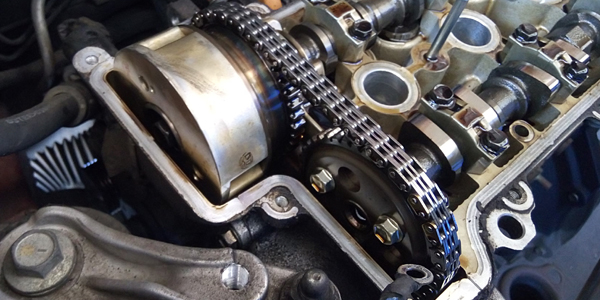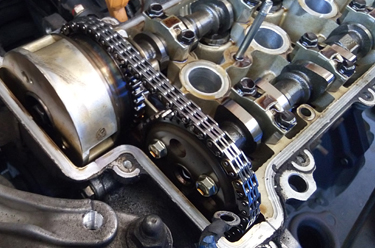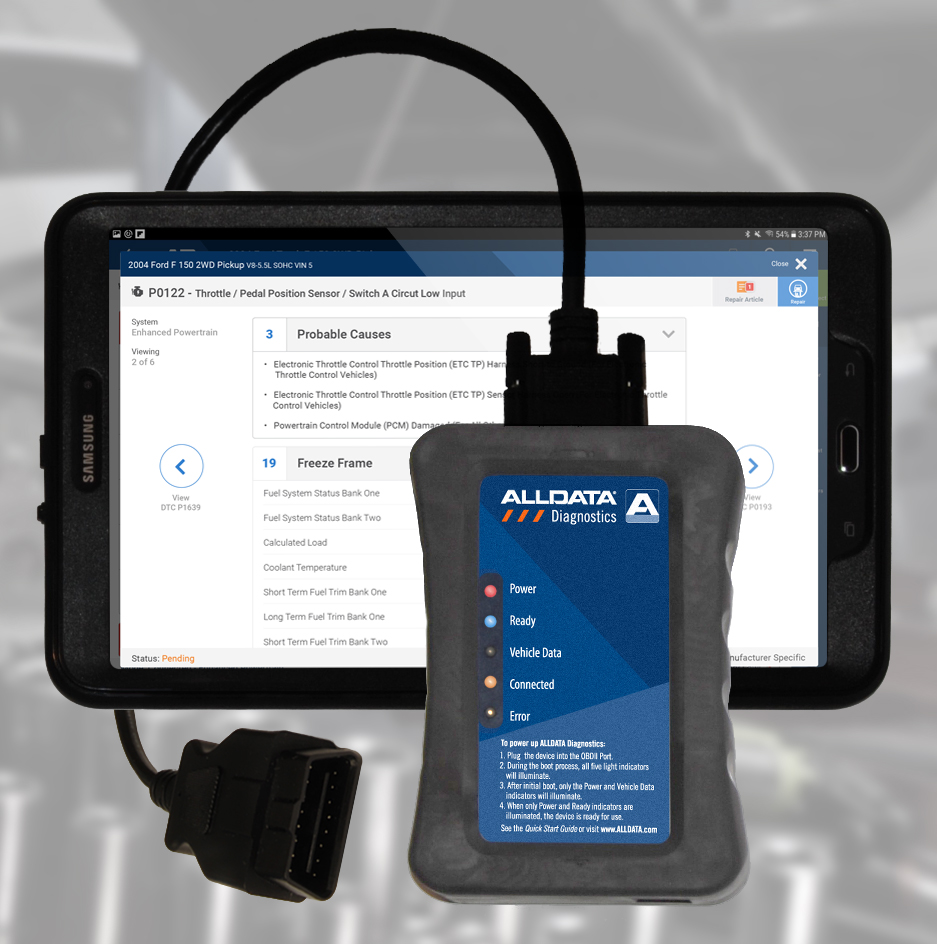
A Variable Valve Timing hack that saves hours

Have an engine misfire or lack of power? Confused by Variable Valve Timing (VVT) codes? The car may also have cam sensor, crank/cam correlation codes and fuel trim problems.
Most modern engines now use VVT systems to advance and retard individual camshafts on demand, based on a variety of engine inputs to greatly improve power and torque, reduce emissions, and increase fuel economy. Most operate using sophisticated systems of electrical solenoids and engine oil pressure to affect rapid changes in cam timing and can be very intimidating to diagnose.
You’ve checked the basics for the engine such as ignition spark, fuel pressure, engine compression, and scan tool data. They are OK, so now you might be worried it’s a VVT system or other cam timing problem, which would mean a pretty intrusive diagnostic process with lots of components to check: oil pressure, solenoids, solenoid servo oil screens, cam phasers, timing chain, guides, tensioner, etc.
Well, there is an easier way…
After many years of learning while working, I have found the most efficient way to determine the cause of any problem is by using a scan tool and looking at the desired and actual camshaft angle parameters. This can help to isolate whether a condition is specific to one camshaft, one bank, or caused by a condition with the base cam/crankshaft timing.
If you graph the cam angle PIDs, all the better, but simply observing these data PIDs can be sufficient.
At startup, track the VVT timing (actual and desired) or the amount of cam timing error data PIDs and watch what happens. (Some data PIDs list actual and desired and some only list the amount of error but that will work too.)
|
If cam timing is normal at start up and then starts to rise as it’s running, the solenoid spool is stuck. |
|
If timing is wrong at start up, the phaser is stuck, timing has jumped, or the drive was installed wrong. |
|
If actual usually tracks desired but occasionally stops changing, the phaser is sticking. |
|
If the phaser is erratic at start up or is very advanced (intake) or retarded (exhaust) and then tracks normally after a few seconds, the phaser locking pin is damaged. |
|
If the phaser always tracks desired but slowly, then the problem is oil - low pressure or volume, an internal leak (O-ring, gasket, worn bearing, etc.) or a clogged VVT solenoid screen. |
With your scan tool in Generic Mode, you can also check the “VVT Monitor Test Results” in Mode $06. On older vehicles, they sometimes called it EGR Monitor. This is a great resource. It will often tell you the degrees of error, tolerance, and speed that were checked.
If you do need to perform a phaser or timing chain replacement, keep in mind the labor time invested and age of the other components to avoid a comeback. It always pays to do a complete job the first time, saving you valuable time and building customer confidence.
Example of Variable Valve Timing Trouble Codes:
2017 Chevrolet Camaro 3.6L V6 – VVT DTC Descriptors
Here is a basic list of VVT system codes from a 2017 Chevrolet Camaro 3.6L V6. As you can see in this example, there are a lot of VVT codes, but many are repeats since the same type of fault can occur on any of the 4 cams this engine uses.
|
DTC P0010 |
Intake Camshaft Position Actuator Solenoid Valve Control Circuit Bank 1 |
|
DTC P0013 |
Exhaust Camshaft Position Actuator Solenoid Valve Control Circuit Bank 1 |
|
DTC P0020 |
Intake Camshaft Position Actuator Solenoid Valve Control Circuit Bank 2 |
|
DTC P0023 |
Exhaust Camshaft Position Actuator Solenoid Valve Control Circuit Bank 2 |
|
DTC P2088 |
Intake Camshaft Position Actuator Solenoid Valve Control Circuit Low Voltage Bank 1 |
|
DTC P2089 |
Intake Camshaft Position Actuator Solenoid Valve Control Circuit High Voltage Bank 1 |
|
DTC P2090 |
Exhaust Camshaft Position Actuator Solenoid Valve Control Circuit Low Voltage Bank 1 |
|
DTC P2091 |
Exhaust Camshaft Position Actuator Solenoid Valve Control Circuit High Voltage Bank 1 |
|
DTC P2092 |
Intake Camshaft Position Actuator Solenoid Valve Control Circuit Low Voltage Bank 2 |
|
DTC P2093 |
Intake Camshaft Position Actuator Solenoid Valve Control Circuit High Voltage Bank 2 |
|
DTC P2094 |
Exhaust Camshaft Position Actuator Solenoid Valve Control Circuit Low Voltage Bank 2 |
|
DTC P2095 |
Exhaust Camshaft Position Actuator Solenoid Valve Control Circuit High Voltage Bank 2 |
Want to see how ALLDATA can improve shop efficiency? Check out our suite of products, each designed to contribute to both shop efficiency and productivity.
If you would like to read more articles like this one please subscribe to ALLDATA News.







